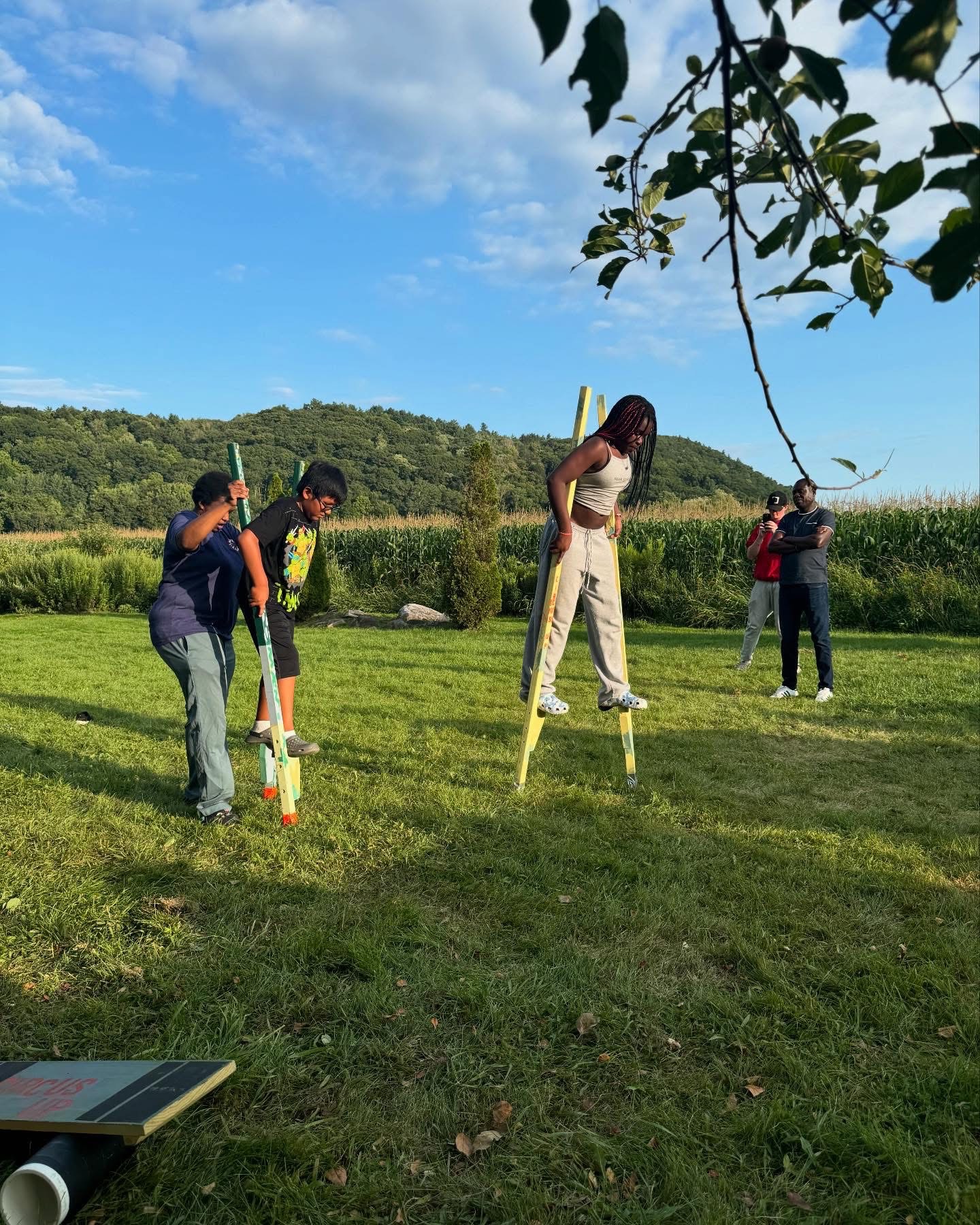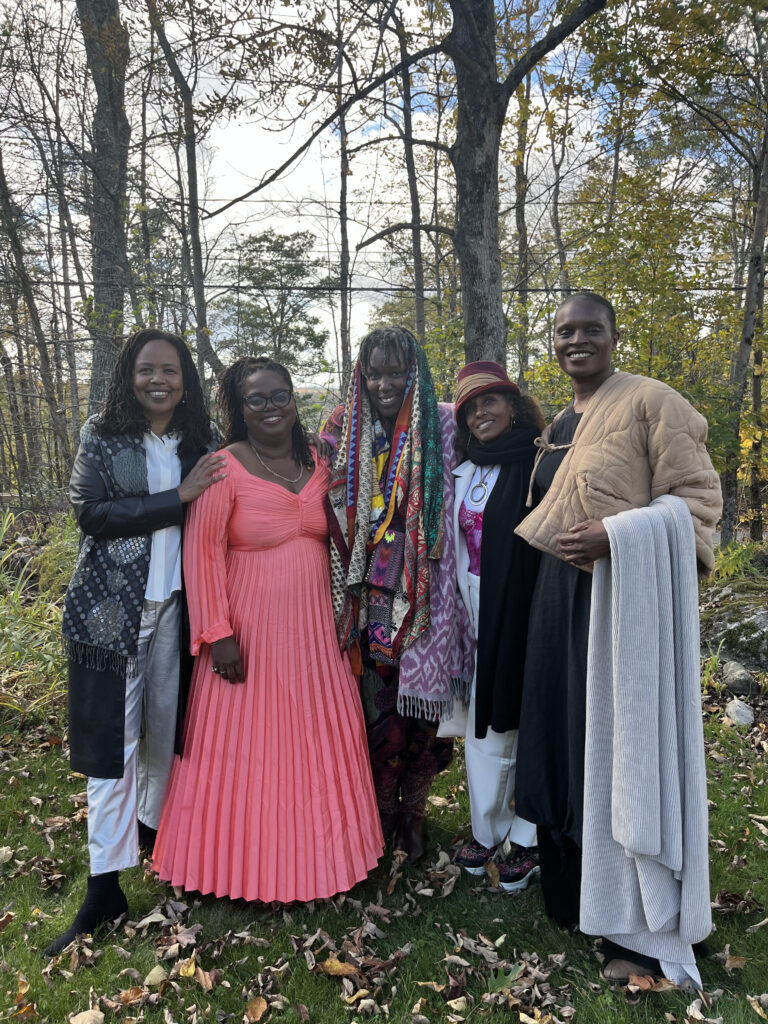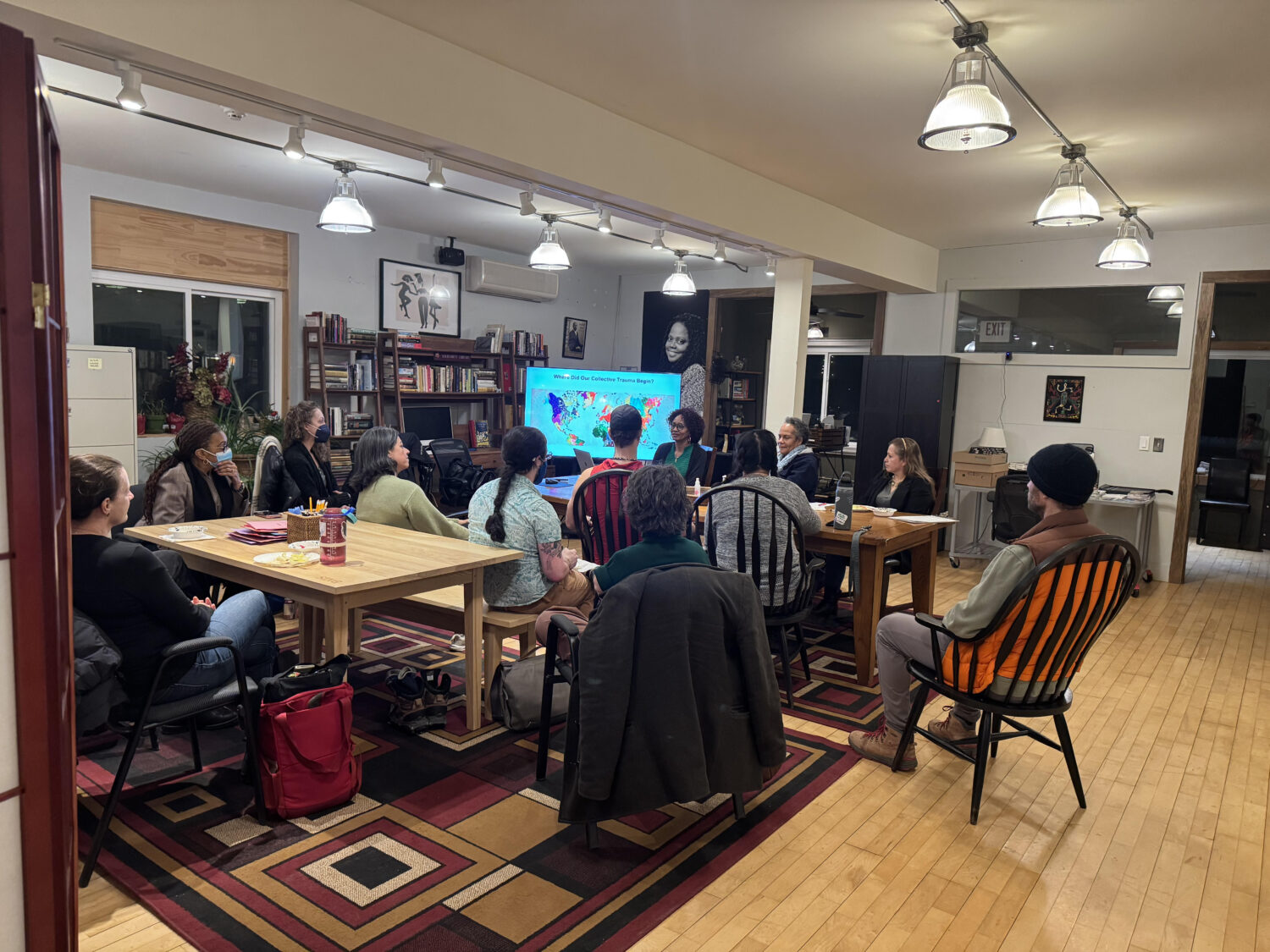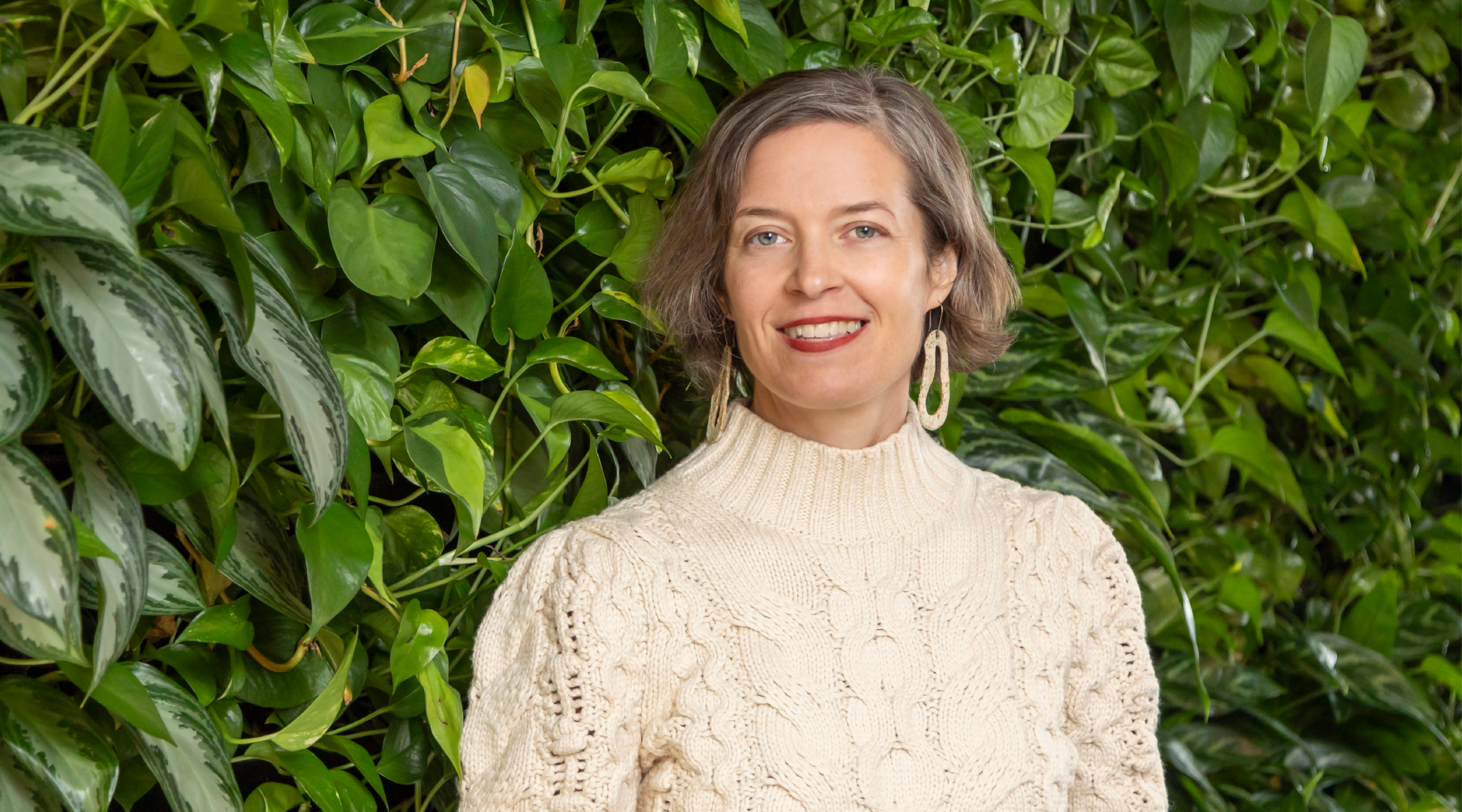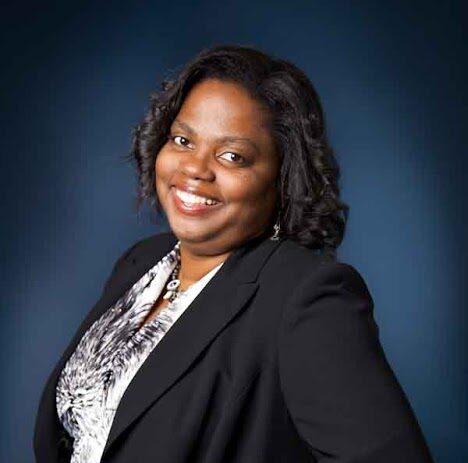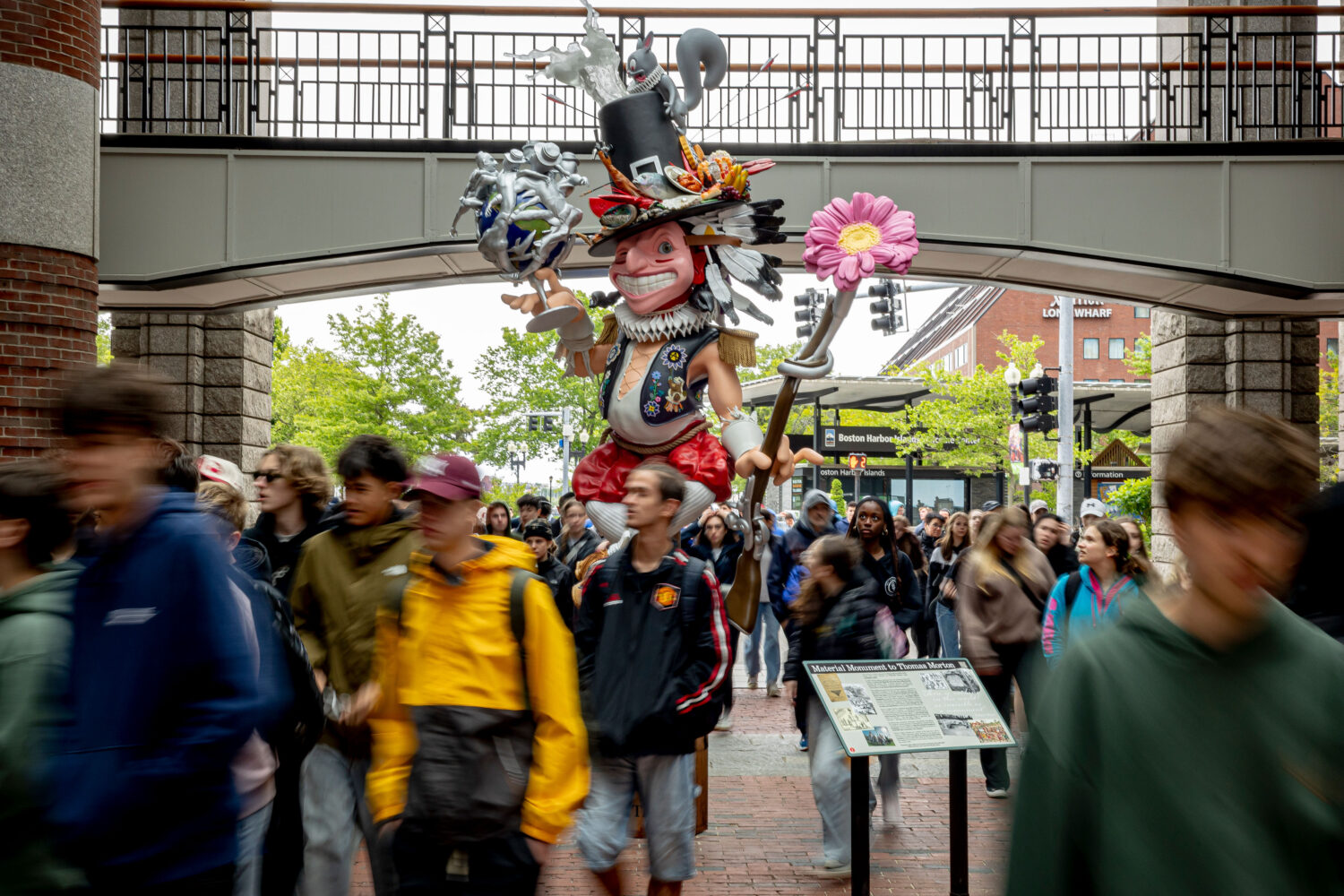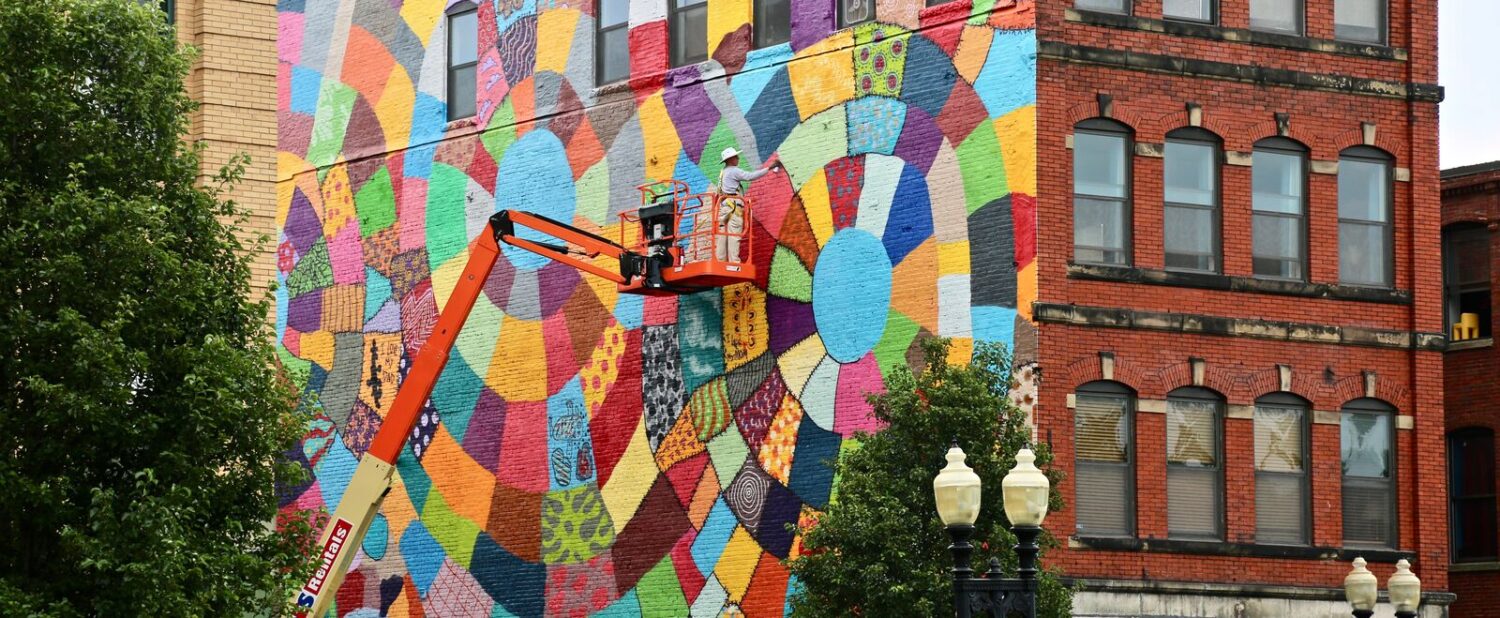Across the Arts + Creativity program, our grantee partners have been interested in exploring ways to communicate and engage with diverse communities. Within the arts as well as other sectors, Gwendolyn VanSant and her organization, Multicultural BRIDGE, have been enormously influential. We were pleased to invite Multicultural BRIDGE to join Barr’s Catalyzing Vitality initiative in 2023. At a moment when efforts to promote diversity, equity, and inclusion face new challenges, I had the opportunity to sit down with Gwendolyn to discuss her work and hear her forecast on what’s next for this work in the field.
Multicultural BRIDGE, founded in 2007, is a social justice nonprofit based in Lee, Massachusetts. BRIDGE works to create cross-cultural understanding, appreciation, and communication in businesses and organizations in Berkshire County and across the state. BRIDGE offers foundation courses designed to help staff in many different sectors, including law enforcement, the arts, and public health confront biases that can stymie effective communication and community service.
One of VanSant’s most prized workforce programs is designing and hosting her IDEA Institute’s Inclusive Leadership Cohort (ILC) for Social Change — a year-long, peer-led program for leaders of organizations committed to equity and inclusion. The program provides coaching services that walk participants through “IDEA” — trainings focused on Inclusivity, Diversity, Equity and Accessibility.
Your IDEA ILC cohort brings together leaders in different sectors and from different geographies. Why was that important?
VanSant: When our IDEA ILC launched, we had half of the group from the arts world, and the other half from banking, hospitals, and other service organizations. It was very powerful to have so many arts-focused leaders and professionals come into the community together, from across their different organizations, to step into this work in real practical ways. That was powerful because the cross-sharing of knowledge was really important and eye-opening for people.
The group created a new community of practice together that has endured since 2021 and has created ripples of positive change, not just in their individual organizations, but throughout the broader community. New legacies of equity and belonging have been forged. This required work, some discomfort, and a willingness to step outside of what each group knew separately to discover the commonalities they shared.
This collaborative cross-sector effort resulted in equity for pay within the arts; greater accessibility to the arts through community partnerships, leadership development and organizational culture change; and improved access to capital in majority Black communities for entrepreneurs and businesses.
Organizations that offer programs fostering diversity, equity, and inclusion may face a reduction in federal funding under the current administration. What has this meant for BRIDGE?
VanSant: When Trump was president the first time, we lost one or two contracts that had federal funding. His second Administration is doubling down, but I think we can navigate the demands with the same tools we used before—effectively leaning further into who we are—our mission, vision, and values.
BRIDGE can’t hide from who we are as an organization—we’re community-centered, global majority-run, and woman-run. Diversity and inclusion are baked in. We stand strong in our values, particularly equity and accessibility, because we couldn’t really build bridges across cultures without them.
BRIDGE is about supporting healthy culture, stewarding belonging, and facilitating transformation. That won’t change., Although, given the politicization, I don’t know if we’ll ever again call our work “DEI.”
As for federal funding, BRIDGE has again experienced direct and indirect impact for urgent and future support.
What does BRIDGE’s work look like now?
VanSant: We are committed to helping organizations move through the necessary discussions and take active, accountable steps toward justice. Since our inception, BRIDGE has centered race equity work with a power analysis. We even engage our donors and board members in cultural competence training and, more importantly, ongoing bias awareness and cultural humility work. I’ve always said that an organization needs to be committed to the cultural competence and cultural humility work to move forward.
When we were founded, I used to say that our cultural competence training, the first model of training we offered, was the new age of diversity training. And even then, it wasn’t about do’s and don’ts—but today, it’s even more clear that the training is about the soft skills of being in a community together, being able to work across cultures.
When people come into our trainings, they’re invited to explore their own identity and the ways they experience privilege and oppression in society and develop an understanding of impact versus intent. I have a philosophy in my coaching work around equity and inclusion; if you don’t do that foundational work, it’s really hard to do the strategic work of any equity effort.
Today, all of this fits into our approach like a flow chart of the cultural competence, cultural humility work, and then the IDEA work. This approach positions us to better help our partners get into the real power shifting work. By then you know this is a life practice, not a training you can go to and check off your list.
What do you see as the biggest pitfall when people come to this work?
VanSant: I often find that people who are well-intentioned believe that good intentions is all it takes. Intention is good, but we have to take stock of what the work really is. People need to embrace all of the work that has to happen on a personal, cultural, and interpersonal level as well as learn how to build a strong systemic analysis. Folks with privilege and entitlements need to be able to get uncomfortable — when that space for real dialogue and deeper understanding opens, we all stand to gain so much more.
We all have to be ready to take risks, and be in authentic relationships with people different from us. We have to build the muscle to genuinely build connections and care. When a willingness to take risks is missing, there will always be limitations to how far this work can go for any individual, workplace, or community. It’s important to recognize that the solutions aren’t going to come from somebody else or somewhere else. Sometimes that can feel daunting, but I personally view this as a place of empowerment and hope. We have the tools we need, and we have the power to change our communities to better serve everyone.
You talk about the importance of developing trust-based relationships. And for communities of color, you say there is also work to do. What is it?
VanSant: Within our communities of color, we have work to unlearn internalized oppression. The most important step is to heal the wounds of historic violence. When we haven’t yet done that work, it can steer us off mission and we can shift into caretaking and protecting modes. When things get hard, people inherently snap back to what they know.
Communities of color have to work together to heal together and create spaces and institutions and frameworks that support that healing. Right now, oppressive systems are making people scared and keeping us separated. We have to pause and identify that oppression at work and then double down on choosing to build relationships across differences in our communities. That work needs to happen within ourselves, our communities, and organizations and defines the pathways of partnership, allyship, and trust.
You bring together so many different organizations with limited or no prior experience working together. How do you create psychological safety?
VanSant: Our work invites participants to notice where their discomfort is and notice if they’re actually threatened. If you’re uncomfortable, that’s good. We are working to disrupt systemic structures that we’ve all been born into and are swimming in. But if you are feeling threatened, then that would be my responsibility to hold. When people understand that they are addressing or confronting systemic issues, it takes the conversation out of the personal realm and makes a space for solution creation.
During one of our IDEA ILC retreats, a participant made a comment about a major event in recent civil rights history that made the room go quiet. I could see pained expressions on several faces. Even if it was an honest mistake based on something they had not yet learned, I knew we needed to take a moment in real time to bring everyone into a deeper understanding of each other, and how people were impacted. That set a standard for our community.
People were shell-shocked to pause the agenda and delve directly into a deeper discussion on cultural perspectives on community injustice. We had their attention, and we treated it with earnest care, authenticity and a fierce insistence on not accepting the status quo. We still reflect on that pivotal moment. At the ILC, we promised to hold a space that was both safe and brave—but not unwaveringly comfortable—and we really held to it.
What advice do you have for others on the road toward equitable community building?
VanSant: Race equity promises liberation to everyone, but you have to commit to daily work and discomfort for transformation. Now is the time for committed individuals and leaders to really show up with their resources of capital and influence—show up in the spaces that are scary and unfamiliar and show up to work with conviction for justice and equity. That’s how bridges are built.
